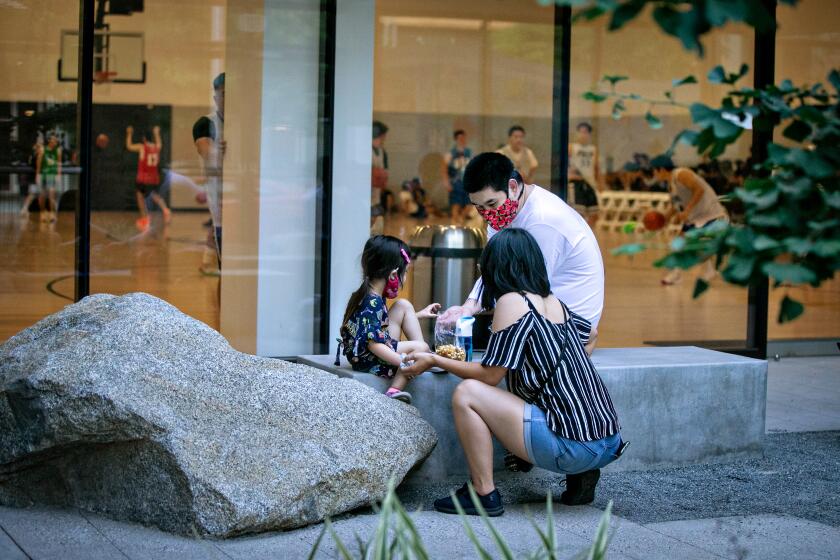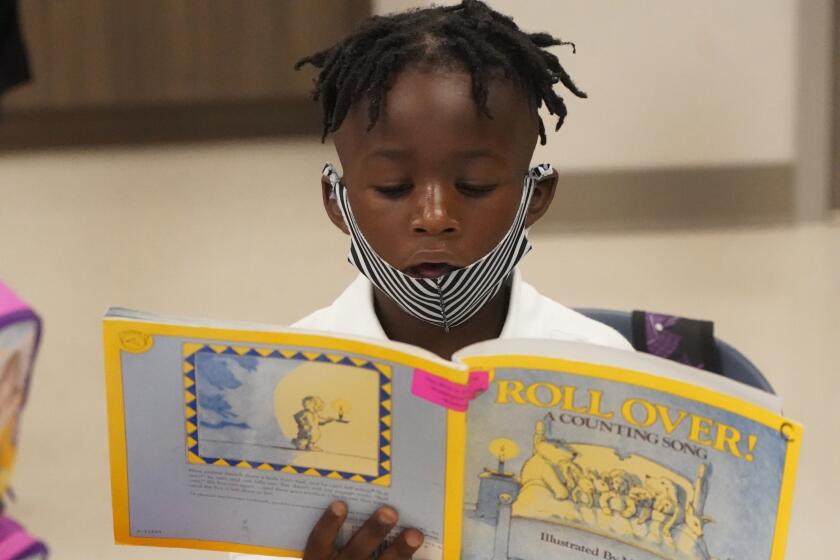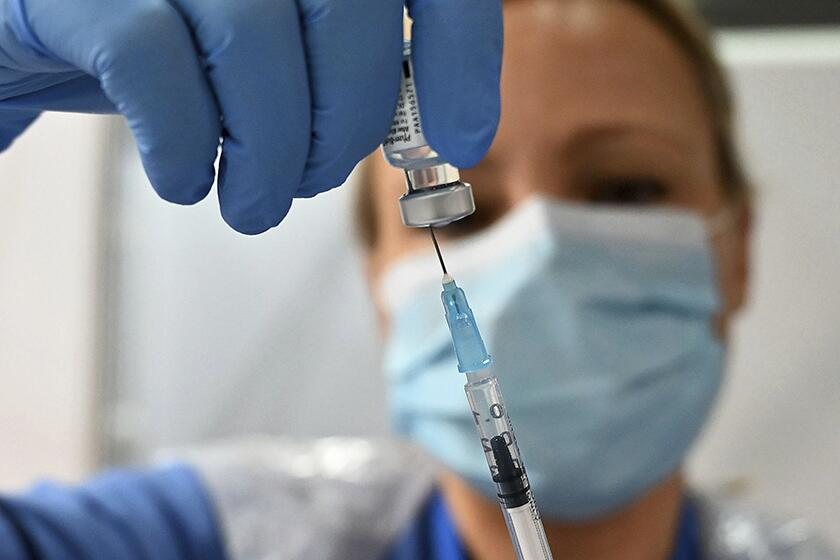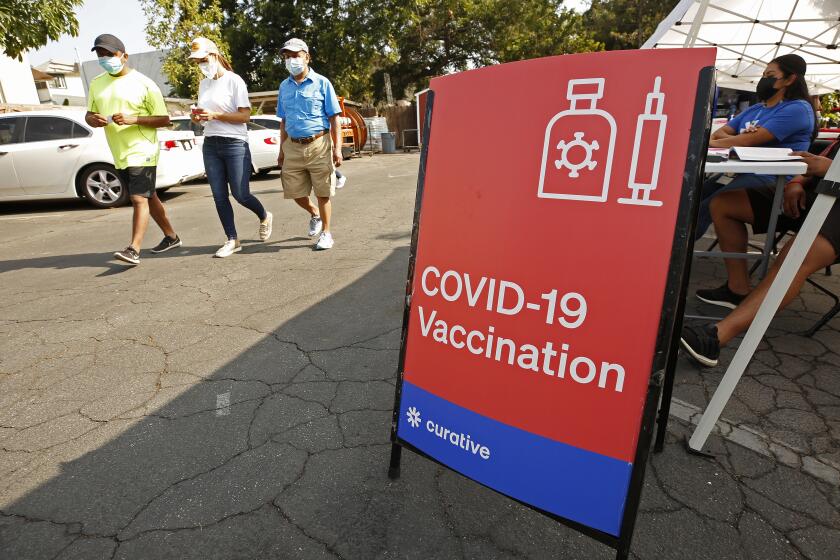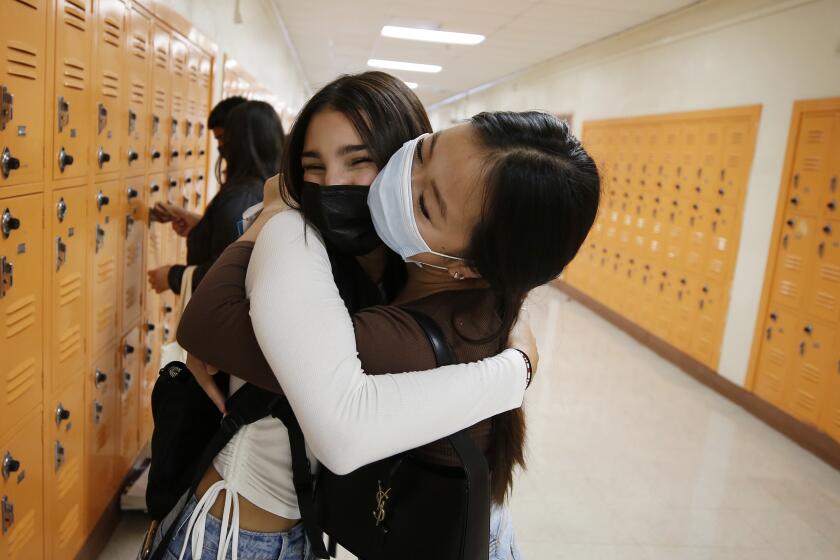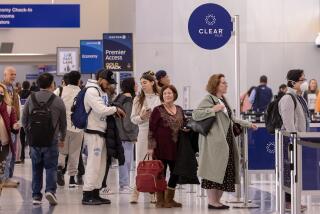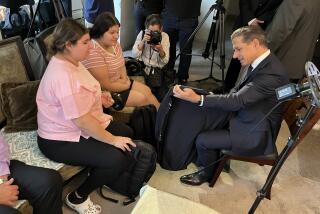How kids can stay safer at school despite Delta variant threat

Despite the threats posed by the Delta variant, there are ways to enhance kids’ safety at school. Here’s what it will take to protect students.
Children in Los Angeles and around California have streamed into schools after more than a year of distance learning. While many students were excited to return to campus, their parents have been feeling anxious about sending them into classrooms while the highly contagious Delta variant continues to spread.
It’s a particular worry for parents of children under age 12, who are too young to be eligible for a COVID-19 vaccine.
Despite the threats posed by the coronavirus, experts say there are ways to enhance kids’ safety at school. Here’s what it will take to protect students as much as possible.
Vaccinate, vaccinate, vaccinate
Children 11 and under are particularly vulnerable because they can’t take advantage of COVID-19 vaccines. So they’re only as safe as the adults and older kids around them.
If those adults and eligible kids are vaccinated — and wearing masks and practicing good social distancing — the younger students will be relatively well protected, experts say. But the fewer people around them who are vaccinated, the more they’ll be exposed to the virus.
You can already see this pattern playing out: As the Delta variant fuels a surge in cases, children have been hospitalized with COVID-19 at unprecedented rates — particularly in regions where vaccination rates are relatively low.
“Vaccination of all eligible adults and students is the most important strategy for decreasing COVID-19 transmission in schools,” said Dr. Kate Connor, a pediatrician at Johns Hopkins University School of Medicine. “This is critical, not just for folks who will be in the school building, but also for family members, caregivers and friends who will be in close contact with students outside of school.”
With kids under 12 still ineligible for the COVID-19 vaccine, how worried should parents be about the Delta variant?
Schools can play an active role in promoting the shots, she added.
“As trusted community hubs, schools can serve as vaccination sites — removing access barriers,” Connor said. “Vaccines can be administered through school-based health centers and/or through other partnerships between schools, local health departments, hospitals and other healthcare providers.”
Masks are vital
Though some governors are going to great lengths to keep masks out of schools, scientists agree that they’re necessary — for everyone on campus.
“The evidence is strongly supportive that universal masking in schools is one way to keep children safe,” said Mercedes Carnethon, an epidemiologist at Northwestern University Feinberg School of Medicine.
Some Republican-controlled states have enacted laws or issued orders prohibiting school districts from requiring masks.
Dr. Ibukun Kalu, a pediatric infectious disease specialist at Duke University, said she and her colleagues have studied the impact of masks in North Carolina schools.
“We’ve worked with about 100 school districts and charter schools where we collected data during peak community incidences for COVID-19,” Kalu said. The researchers found that when students and adults in K-12 settings were required to wear masks, coronavirus transmission rates within schools remained low.
The evidence shows that “masking in the context of some other mitigation measures certainly works to prevent spread within the schools,” she said.
Good ventilation matters
“Ventilation is critically important because it is clear that the virus is spread through respiratory droplets, even through ordinary activities such as talking and eating,” Carnethon said. The virus can also travel via tiny particles called aerosols that can remain suspended in the air for minutes to hours, the Centers for Disease Control and Prevention says.
This means schools should use all the tools at their disposal — opening windows and updating the filters in the HVAC system — to refresh the air. The Environmental Protection Agency says that air filters rated MERV-13 or higher can help in removing viruses from the air. It’s not a one-time deal: Filters will need to be changed out regularly.
Whenever possible, higher-risk activities such as eating, singing or playing wind instruments should take place outside, experts said.
School transparency is key
Schools should make every effort to keep parents in the loop about the health of those on campus.
“One of the first questions would be, ‘What are they doing about data transparency?’” Kalu said. “What happens when someone does get infected ... and how do you follow up potential exposures?”
The LAUSD order is stricter than a state mandate that school staff be either vaccinated or regularly tested for coronavirus
“As part of data transparency, schools could choose to publicly share their staff and/or student vaccination rates,” she added.
Schools can also provide information about masking policies and screening protocols, Kalu said.
“I think those are a quick starting point on understanding the COVID mitigation measures,” she said.
Hold parents accountable — but offer support
Carnethon pointed to another possible weak link in protocols: Other parents, some of whom may not always be forthcoming about their children’s potential exposure — or even their own positive coronavirus test — if they think it will keep their kid out of class.
“This isn’t the common cold, and we have to be far more responsible about pulling kids out when they have any suspicion of COVID-19,” she said.
Unleashing a fast-spreading coronavirus variant on a half-vaccinated population can lead to a vaccine-resistant strain.
She pointed to a recent case in Reno, where a parent knowingly sent their child to school after they both tested positive — exposing more than 80 other students to the virus.
“So what is in place as an alternative strategy for when parents are honest about their child’s symptoms, so that they won’t be encouraged to lie?” Carnethon said. “Because that’s where things really fall apart.”
One way to help parents would be to make testing for young students available on campus, she said, because in some places it isn’t always easy to find for young children.
Surface cleaning is fine — though shared surfaces are not a dominant route of transmission
Since the coronavirus mostly spreads through the air, surface cleaning is not the most important strategy in a school’s arsenal, experts said.
“I can’t tell people cleaning is a waste of time because there are other diseases and illnesses that people can get” off of shared surfaces, Carnethon said. But while “it’s not going to address the primary transmission routes, it is reassuring to hear that they clean and sanitize.”
Students across California are returning to a very different school experience. Here are answers to common questions about vaccines, testing, masks and more.
The problem is that it’s easy to get carried away with unnecessary and excessive sanitizing, she said, pointing to a school where staff members were spraying balls after each child used them during P.E. class.
“That level of cleansing of balls and other play surfaces for kids ... is not a good use of time and effort,” Carnethon said — especially if kids are wearing masks to keep viral particles from escaping or entering their noses and mouths.
Kalu agreed.
“A contaminated surface could potentially lead to spread, but it’s not the main way that the virus spreads,” she said.
